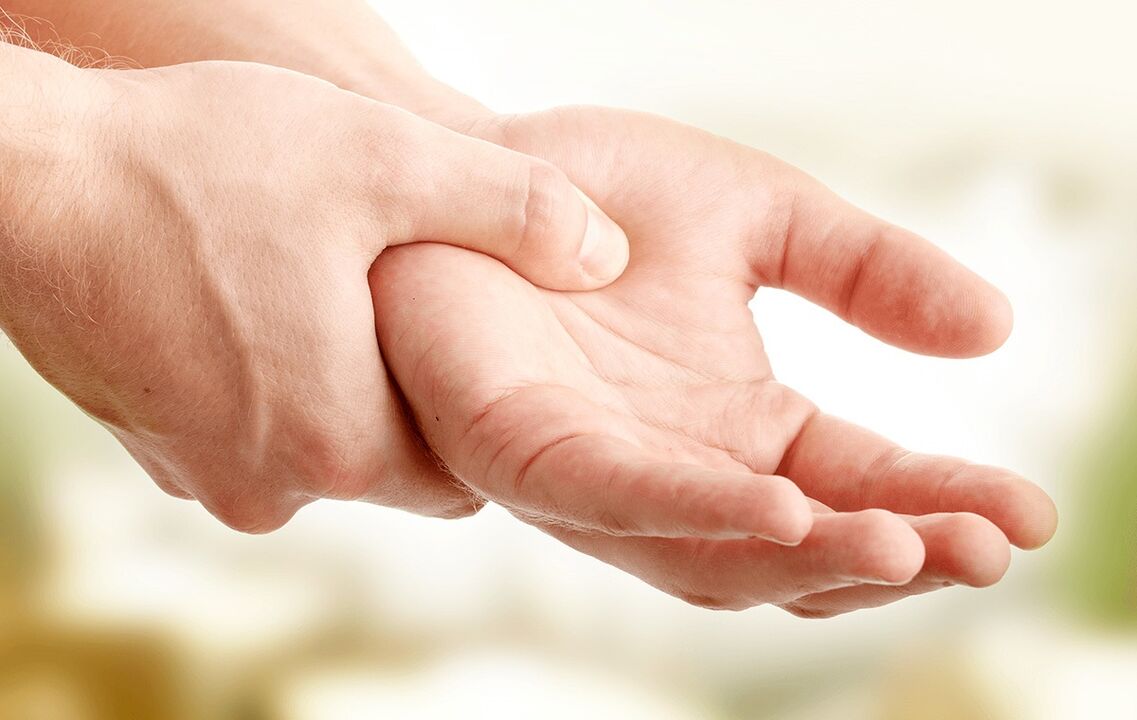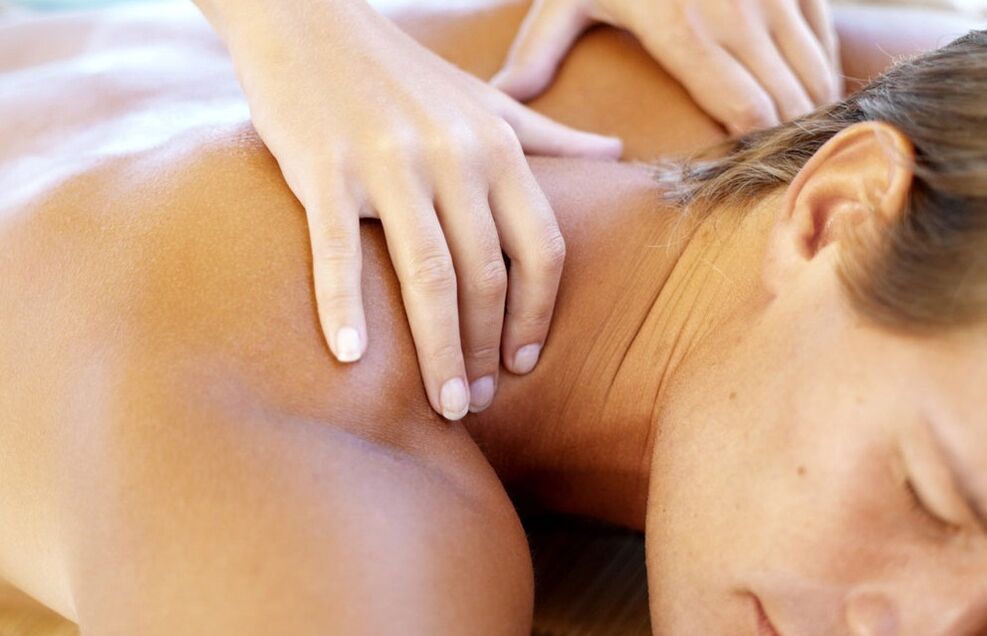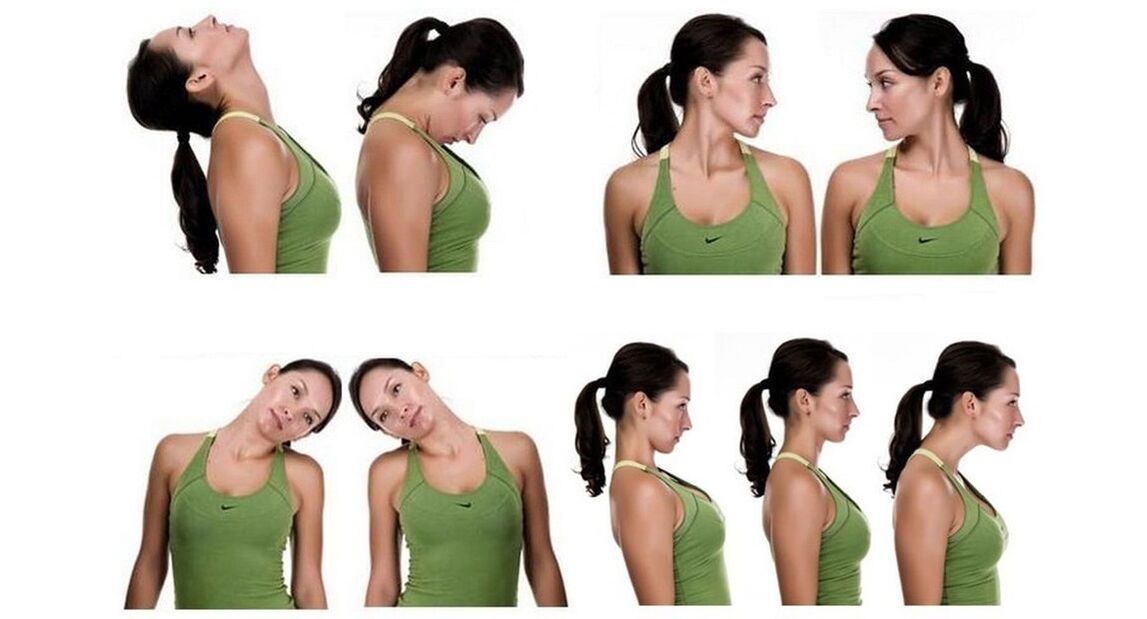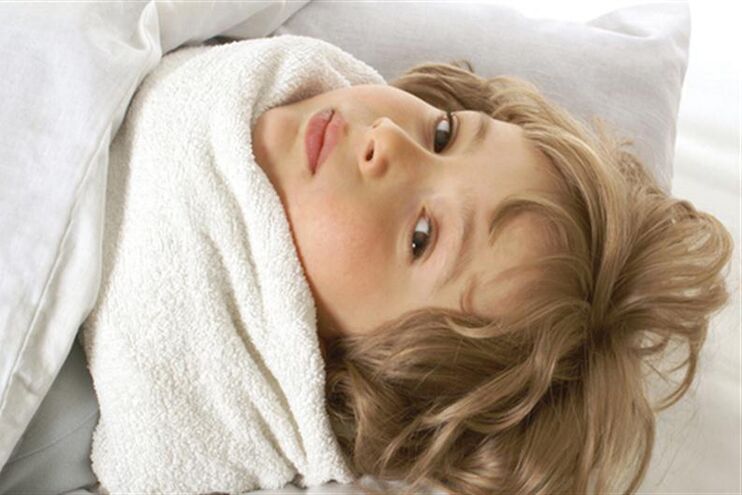
Universal statistics claim that more than 80% of the population is diagnosed with osteochondrosis of the cervical spine at various stages. Meanwhile, doctors warn of the very dangerous consequences of negligent forms that can endanger not only the health but also the life of the patient.
Osteochondrosis of the cervical region - what is it
Osteochondrosis in itself is an irreversible degenerative-dystrophic destruction of vertebral discs and vertebrae. It is characterized by disruption of the integrity of the intervertebral component, which causes intervertebral hernias and dislocations, and further destruction of the vertebral bones. These changes lead to complex processes in the body and, in addition to causing severe pain, affect the functioning of the body as a whole.
The process is irreversible, damaged cartilage and discs cannot be repaired, only their destruction can be slowed down.
The danger of such a process in the cervical region increases due to the presence of a large number of nerve fibers and blood vessels connecting the brain and the human body, as well as the proximity of the placement of the vertebrae (there are 7). in a small space).
Attention! The slightest constriction of arteries, nerve fibers or blood vessels in the cervical spine will cause a number of symptoms, the severity of which will depend on which roots or arteries are constricted.
Reasons
There are many causes of this dangerous disease, although it is still unknown exactly why osteochondrosis occurs in a particular area. Among the factors that provoke cervical osteochondrosis:
Life style
This is the largest factor in terms of both quantity and quality. It should include:
- sedentary work method;
- stay in a tense or restless state for a significant period of time;
- small physical loads on the spine (this helps to weaken the muscle corset);
- excessive stress on the spine.

Today, many people are exposed to the listed factors of the disease according to the dominant model of social life and social behavior.
Injuries
In 90% of cases, spinal cord injury is accompanied by cervical osteochondrosis. It often occurs not immediately after the injury, but after a certain period of time. The main component of what will happen here will be the broken integrity of the chain.
Hormonal disorders
This factor can occur during adolescence, during the reconstruction of the child's body. This type of osteochondrosis can be successfully treated.
If osteochondrosis occurs against the background of menopause or hormonal changes (diabetes, multiple sclerosis), treatment will be symptomatic.
genetic predisposition
This reason almost always happens with others. Since genetic predisposition is not the basis of the disease in itself, it is of great importance in the presence of other factors.
Symptoms
The manifestations of cervical osteochondrosis are very similar to many diseases, which complicates the diagnosis. Their manifestations depend on which nerve roots are compressed, in addition, many symptoms are associated with impaired blood circulation in the brain. Despite the wide range of symptoms, some of the most common can be identified. Their appearance and severity will depend on the stage of development of the disease. Here they are given according to the frequency of occurrence.
Headaches in osteochondrosis of the cervical spine
One of the first, most persistent, and most common symptoms of cervical osteochondrosis is a migraine-type headache. It will be well stopped by analgesics, but as the disease progresses, its intensity becomes higher and it becomes increasingly difficult to stop.

The pain can spread with a pulsation in the temples and back of the head, can affect the parietal region, can affect the parietal bone.
Sore throats
It is usually mild at first, the pain in the neck is visible only when touching the affected area, in the future the pain may spread to the back of the head, shoulder, arm (it depends on which nerve endings are compressed). At the same time, when the head is turned or bent, it appears in a sharp movement of the body, is fixed, has an increasing intensity.
Limitation of range of motion, compression
Another symptom of cervical osteochondrosis is restriction of head and neck movement, the patient has difficulty turning his head, is unable to do so completely, and is unable to tilt his head forward or backward. There is a characteristic crisis on the way back.
hand weakness
If the nerve roots responsible for the innervation of the upper extremities are damaged, weakness appears in the arms, and in severe cases, paralysis can occur.
Harmony of hands or body
When squeezing the roots responsible for sensitivity, there is a loss of sensitivity in the hands, fingers, or numbness of individual areas. With advanced forms of the disease, paralysis of the hands and the whole body (in whole or in part) is possible. It also depends on which nerves are affected.

Hearing, vision loss
The disease is characterized by symptoms such as hearing and vision loss, numbness of the lips and tongue. These organs are close together and are the first to suffer from insufficient oxygen supply to the brain.
Dizziness with cervical osteochondrosis
One of the most unpleasant symptoms of cervical osteochondrosis will be dizziness, sometimes accompanied by loss of coordination, in some cases there is fainting, nausea. These symptoms are associated with impaired cerebral circulation as a result of constriction of blood vessels and blood vessels.
About diagnostic methods
If one or more symptoms of cervical osteochondrosis occur, it is better to consult a doctor for diagnosis. There are several ways to diagnose osteochondrosis, the most well-known of which are:
- CT scan;
- magnetic resonance imaging;
- dopplerography of blood vessels;
- The most commonly used is radiography.
Radiography will provide little information for the diagnosis of osteochondrosis in the early stages. Vascular dopplerography is performed in difficult cases, when severe symptoms occur: loss of sensation in large areas, paralysis, fainting.
Successful treatment is possible only in the early stages of the disease, and it depends on the correct diagnosis.
Stages of the disease
The disease is characterized by an increase in symptoms and their severity, there are 4 stages.

- I-I - this is pain in the neck when touching the affected nerve endings. Pain occurs when turning the head or neck. No damage is found at the level of the spine, only a violation of the intervertebral space.
- II-I - this is the appearance of shooting pain that can spread to the arms, shoulders and intensifies when turning the head. Migraine headaches. The pain is caused by small destructive changes in the vertebral discs.
- III-I - increased pain, constant, numbness, stiffness of head movements, weakness in the hands, impaired attention and memory. At this stage there is a violation of the integrity of the discs (cracks, protrusion of the articular sac), intervertebral hernia.
- IV-I - characterized by destruction of discs and vertebrae, violation of bone integrity. Surgical intervention is often required at this stage, as hernias can cause paralysis and immobilization of the upper extremities or the entire body.
Home treatment of cervical osteochondrosis is possible and necessary in stages 1-2, in stage 3 medical treatment is required under the supervision of a physician.
Home treatment
Before starting treatment at any stage, it is necessary to consult a vertebrologist who will make a correct diagnosis and perform the necessary examinations. Osteochondrosis can have symptoms similar to heart failure (hypertension, shortness of breath, attention and memory problems).
Attention! When treated incorrectly or in a timely manner, cerebral ischemia, spinal cord injury, spinal cord compression, and radiculopathy are possible, and these complications of the disease often threaten the patient's life.
With proper and timely diagnosis, home treatment should include the following components:
- drug treatment;
- massage;
- special physical exercises.
All three components are very important, they must undergo a complex treatment, which will give good results in the long run.
Massage
After eliminating the acute pain, a very good effect will be given by traditional massages. It is recommended to conduct their courses at least once every 6 months. Today, there is a large selection of techniques for the treatment of cervical osteochondrosis, which will allow you to choose the most suitable option.

- There are high quality hand methods that allow you to achieve good results.
- A new direction is osteopathy, which focuses on the treatment of the hands, but perceives the human body as a combination of locomotor, nervous and mental systems.
- A good solution would be a professional acupuncture course conducted by an experienced specialist.
- Successful massage is replaced by hirudotherapy (treatment of leprosy), equated with acupuncture for no reason.
Exercises for osteochondrosis of the cervical spine
One of the factors in the development of this disease is small loads on the muscle corset. We lead a sedentary lifestyle, spend a lot of time in the same position, often worry. Therefore, 10 simple exercises to strengthen the neck muscle corset should be included in your daily workout for everyone. It is especially important to deal with them at the first signs of the disease.
Exercises should be performed only when acute pain is relieved. When aggravated, it is undesirable to do them.

- Stand up 5-7 times: put your feet shoulder-width apart, pull the abdomen in, straighten your shoulders. Raise your arms to the sides and up, then join them from above and bring them back, trying to join the shoulder blades. Then stand up straight again.
- It is good to stand, but you can sit 7-10 times. Wrap your arms around yourself (as if hugging), try to do it as strongly as possible (elbows forward), then bring your hands back and join them by touching your elbows with your palms. Try to pull your stomach.
- It is better to do this while standing, but if you feel very dizzy, you can sit, 3-5 times each movement. The neck is straight, the shoulders are straight. Turn your head to the left and try to touch your shoulder with your chin, do not lift your shoulder. Repeat this, turn your head to the right, take turns.
- Do the same exercise with your head tilted back and forth as much as possible. Try to reach the chest with your chin. Take the slopes slowly.
- Then, very slowly and carefully, tilt your head forward and draw a semicircle from your left shoulder to your right. Do not make circular motions - only semicircles. Repeat the movement in the opposite direction.
Do this exercise by throwing your head back as far as possible. Remember to do this slowly and only in semicircles.

- It is also better to stand on your feet, but you can also sit for 5 seconds. 3-4 times. Squeeze your fists and place your chin on them. Press the fists firmly with the chin for 5 seconds, then place them behind the occipital bone and press again. This exercise trains the neck muscles well.
- Perform 7-10 turns in each direction. Put your hands on your hips, tilt your head as far forward as possible, it is better if you can put your chin on your chest. Now keep your chin on your chest and turn your head left and right alternately.
- Sit in the lower back seat, try to do this at least 3-4 times. Try to look at the wall behind you with your shoulders.
- Sitting in a chair, put your hands between your knees 5-7 times. Lean to the side while breathing, sit up straight while breathing. Do this alternately to the right and left.
- Lie on your stomach, bend. Try to do this 5-6 times. Climb as high as you can and stay as long as you can.
Tip! Exercise at a convenient time, perhaps during a break or when you are tired of tense poses. There can not be much here. The main thing is not to do too many at once.
Treatment with folk remedies
Treatment of spinal problems with folk remedies mainly involves warming the affected area. You need to be careful when using prescriptions for the treatment of cervical osteochondrosis, because being too close to the brain can make very intense warming more harmful than beneficial.

You should use recipes that do not cause severe irritation and have a mild effect.
Grandmother's ointment
To prepare it you will need:
- 10 ml of iodine;
- 10 ml of camphor oil;
- 10 tablets of analgin (500 mg);
- 300 ml of alcohol.
The tablets should be powdered and all ingredients should be mixed. The resulting composition is applied with a thin layer along the neck.
Compresses
- potato. At night it is better to apply a compress of grated potatoes with honey.
- Horseradish. Fresh horseradish leaves should be kept on water vapor, cooled and applied for 10-15 minutes. neck
- Hop. Crush unsalted fat (1 tablespoon) and add ground fresh or dried yeast cones (1 teaspoon), apply the resulting mixture on the back of the head as a compress overnight.
- Aloe. Take 1 part of aloe leaves, 2 parts of honey and 3 parts of vodka. Mix everything and allow to infuse for 12 hours. Apply the compress for no more than 15 minutes.

Treatment
Traditional treatment should consist of anti-inflammatory drugs, which are needed from time to time to relieve severe pain, and drugs designed to mobilize the body to fight the disease: vitamins, neuroprotectors, chondroprotectors.
In addition, depending on the problem, medications are prescribed to relieve the symptoms that occur when a certain part of the nerve roots are damaged, which can be:
- pressure reduction;
- improve vision;
- to eliminate overlap.
Anti-inflammatory drugs
In the early stages, severe pain can be stopped with the help of painkillers.
Non-steroidal anti-inflammatory drugs are prescribed during inflammation to relieve inflammation. These drugs are available in tablets, capsules or injectable solutions. Some are in the form of ointments for external use. The course of treatment should be prescribed by a physician.
Prolonged use of a number of non-steroidal anti-inflammatory drugs can cause irritation of the mucous membranes of the gastrointestinal tract (GIT), even in a healthy person. In the presence of diseases of the gastrointestinal tract - treatment with analgesics leads to exacerbation.
vitamins
Be sure to take B vitaminsone,AT6,AT12). They help to improve the functioning of the brain, have a positive effect on the nervous system, improve the transmission of nerve impulses, which contributes to the improvement of the general condition.
These vitamins can be taken intramuscularly, according to a scheme or in combination, which will significantly improve their effect. In the early stages of the disease, they are indicated as tablets (vitamin complexes) or dietary supplements (not recognized by official medicine).
Drugs that improve cerebral circulation
Neuroprotectors are drugs that affect brain function. These include a large group of drugs that affect various processes, including nootropics that improve memory and concentration.
Medications are prescribed in cases of impaired blood supply to the brain as a result of constriction of blood vessels.
Attention! Neuroprotectants should be prescribed by a neurologist.
Chondroprotectors
A special place is occupied by chondroprotectors - drugs that improve the nutrition of spinal cartilage tissue (glucosamine and chondroitin), which should slow their destruction. Clinically, their positive effects have not yet been proven, but they are used as dietary supplements and are approved by sanitary and medical examinations.
These drugs may be useful in stages I and II. It is unlikely that they will have the desired effect in the future.
About diets and nutrition
With cervical osteochondrosis, it is important to eat foods that contain B vitamins and herbs, it can be:
- poultry;
- porridge, chamomile;
- mint, coltsfoot;
- celery.

Fresh vegetables and fruits are displayed. The use of salt is undesirable, its amount should be minimized. This is due to a violation of cerebral circulation. There is no need to increase calcium and potassium intake.
Osteochondrosis of the cervical spine is an insidious disease that can lead to complex pathologies that lead to disability. At the same time, proper behavior, moderate physical activity and systemic treatment can slow down its development or even stop it for a long time. Live happily and be healthy!


















